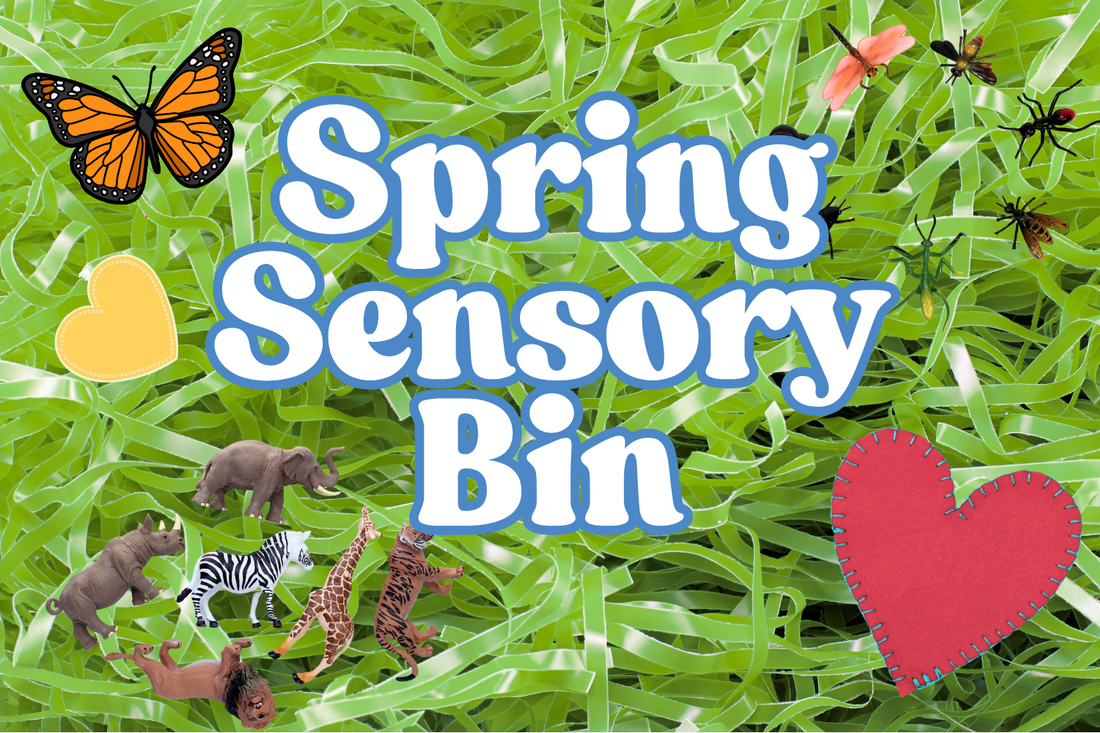
How to Create a Spring-Themed Sensory Bin That Supports Language Development
Sensory bins don’t have to be complicated or time-consuming. You can build one in minutes using materials you already have—or take your time curating just the right pieces for your child’s interests. That’s the beauty of sensory play: there’s no one way to do it.
By observing what your child is drawn to—textures, colors, movement—you can create experiences that not only entertain but also build language, focus, and self-regulation.
Here are three key benefits of using sensory bins to support your child’s development:
- Learning New Words While Having Fun: Sensory bins offer natural opportunities for vocabulary-building, describing, requesting, and storytelling.
- Managing Big Feelings: Scooping, sorting, and exploring help children calm down and feel more in control.
- Problem Solving and Focus: They encourage curiosity, problem-solving, and imaginative thinking in a hands-on way.
Here’s how to build a spring-themed sensory bin that feels fresh, doable, and language-rich.
**This post contains affiliate links from Amazon, meaning I earn a small commission if you make a purchase through them, at no extra cost to you.
🌿 Step 1: Choose Your Base
Start with a filler that sets the scene. You only need 1–2 cups.
🥦 Step 2: Add Spring-Themed Objects
Mix in small, safe items that build vocabulary and sensory interest:
- Plastic bugs, butterflies, ladybugs
- Mini flowers (fabric or felt)
- Scooping Tools
- Pom poms (pollen, buds, clouds)
- Toy animals (rabbits, birds, bees)
- Egg cartons or nests
🛒 Tip: Look in https://www.target.com/ Bullseye section, https://www.michaels.com/ craft bins, or your local dollar store for low-cost spring finds.
📝 Step 3: Use Sentence Starters to Guide Play
Sensory bins open the door for language—but sometimes kids need a little spark. Try these open-ended sentence starters during play:
Describing:
- “I see a _____. It is _____.”
- “This flower feels _____.”
- “The bug is _____ the leaf.”
Comparing:
- “This one is bigger than _____.”
- “They both have _____.”
Imaginative play:
- “Let’s pretend the bee is looking for _____.”
- “The bunny wants to _____.”
Requesting/labeling:
- “Can I have the _____?”
- “I found the _____.”
🎧 Bilingual Bonus:
Support Spanish-speaking families or dual language learners with simple prompts:
- “Where is the butterfly?” / ¿Dónde está la mariposa?
- “Let’s water the flower” / Vamos a regar la flor
- “The bunny is under the leaf” / El conejo está debajo de la hoja
🌸 Tip: Keep It Fresh
Change one or two objects weekly to keep kids engaged and vocabulary expanding. Add:
- Tiny rainboots or umbrella pieces
- Sequins for raindrops
- Small seed packets or pretend vegetables
💬 Final Thoughts
A sensory bin is more than a bin. It’s a mini world that builds fine motor skills, storytelling, turn-taking, and expressive language—with zero screens required.
